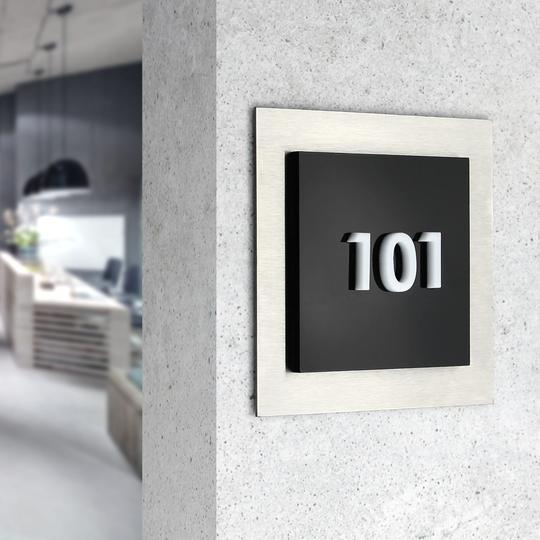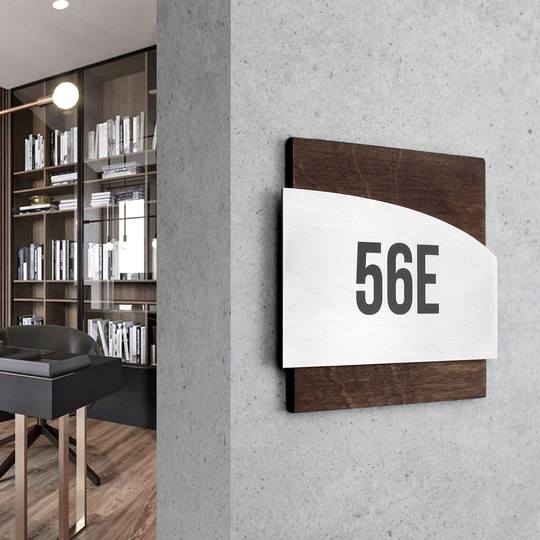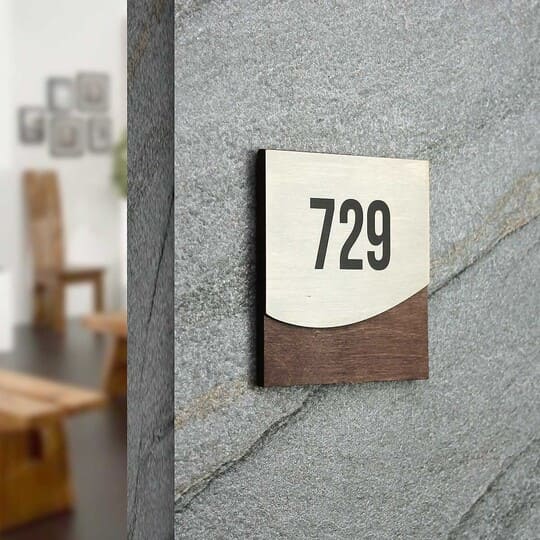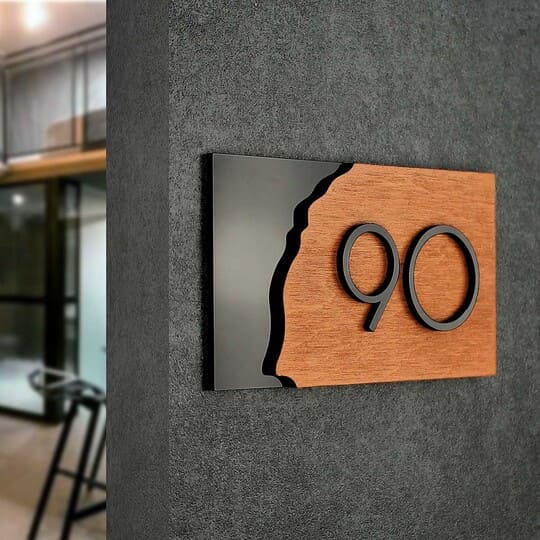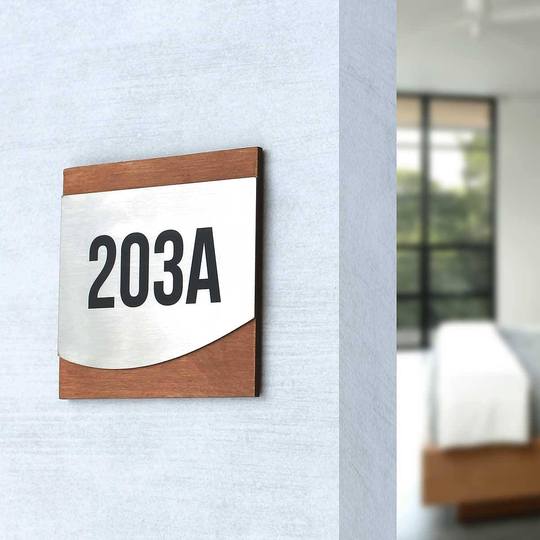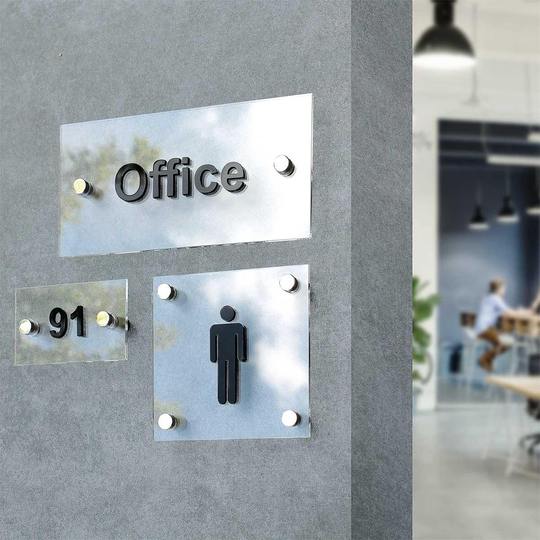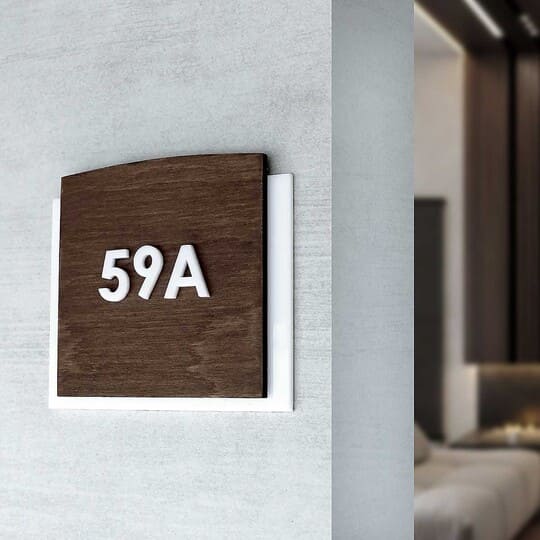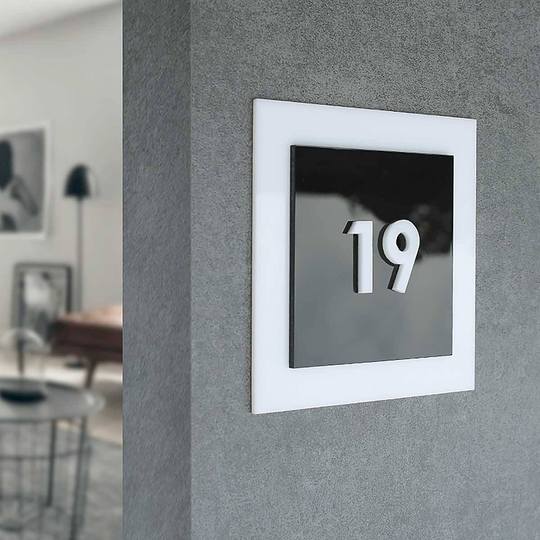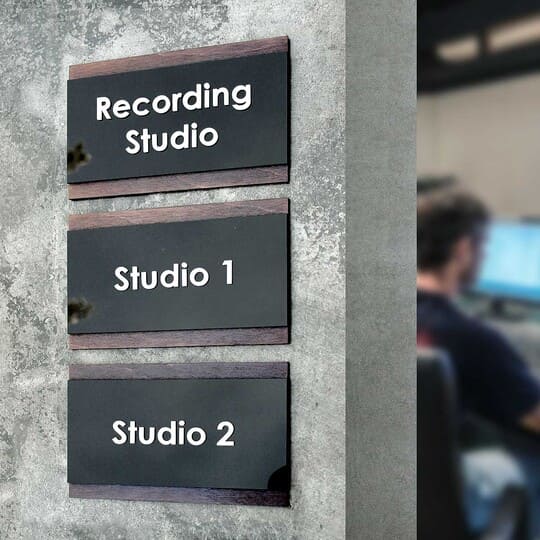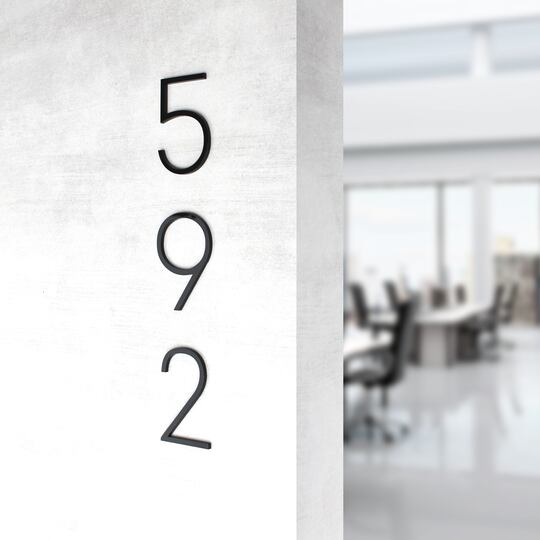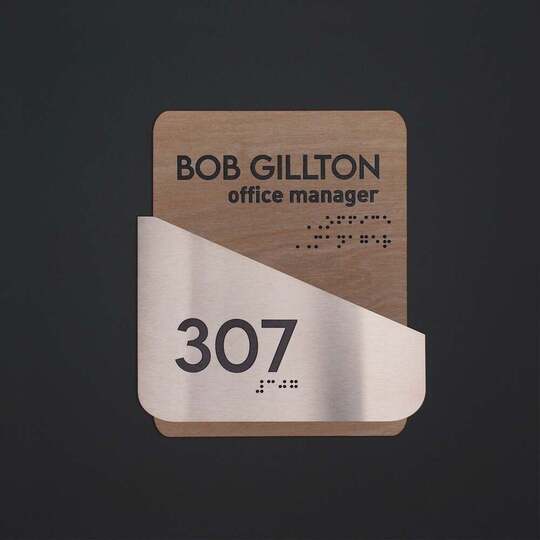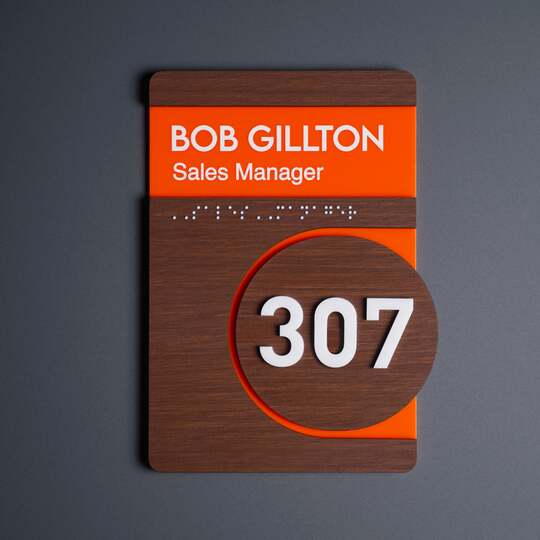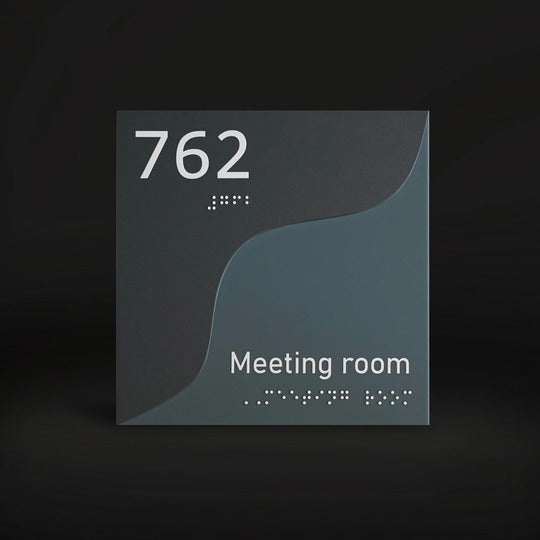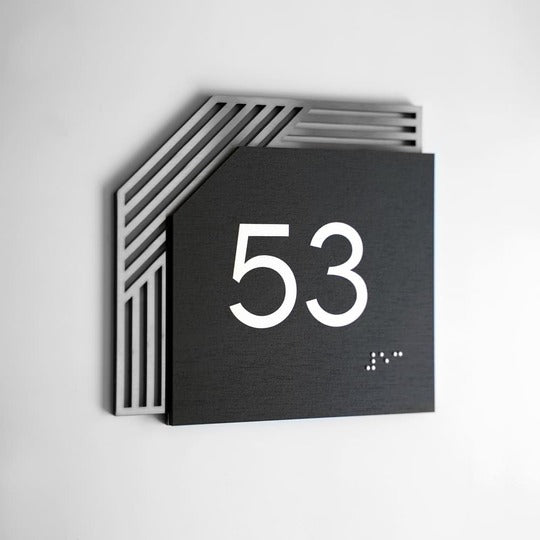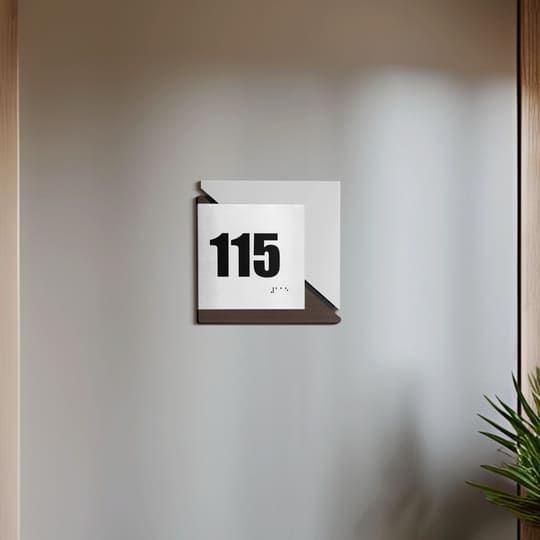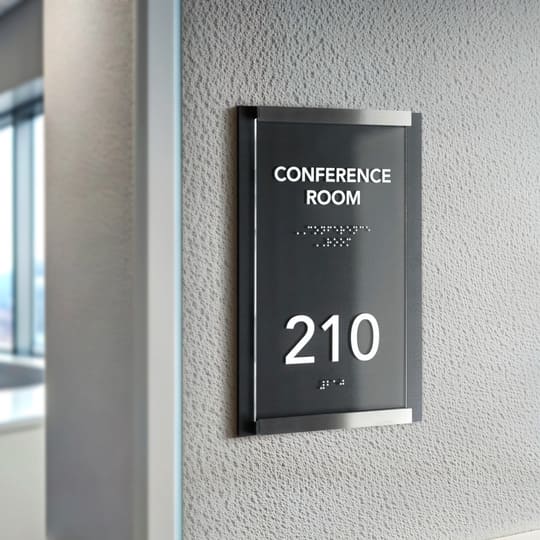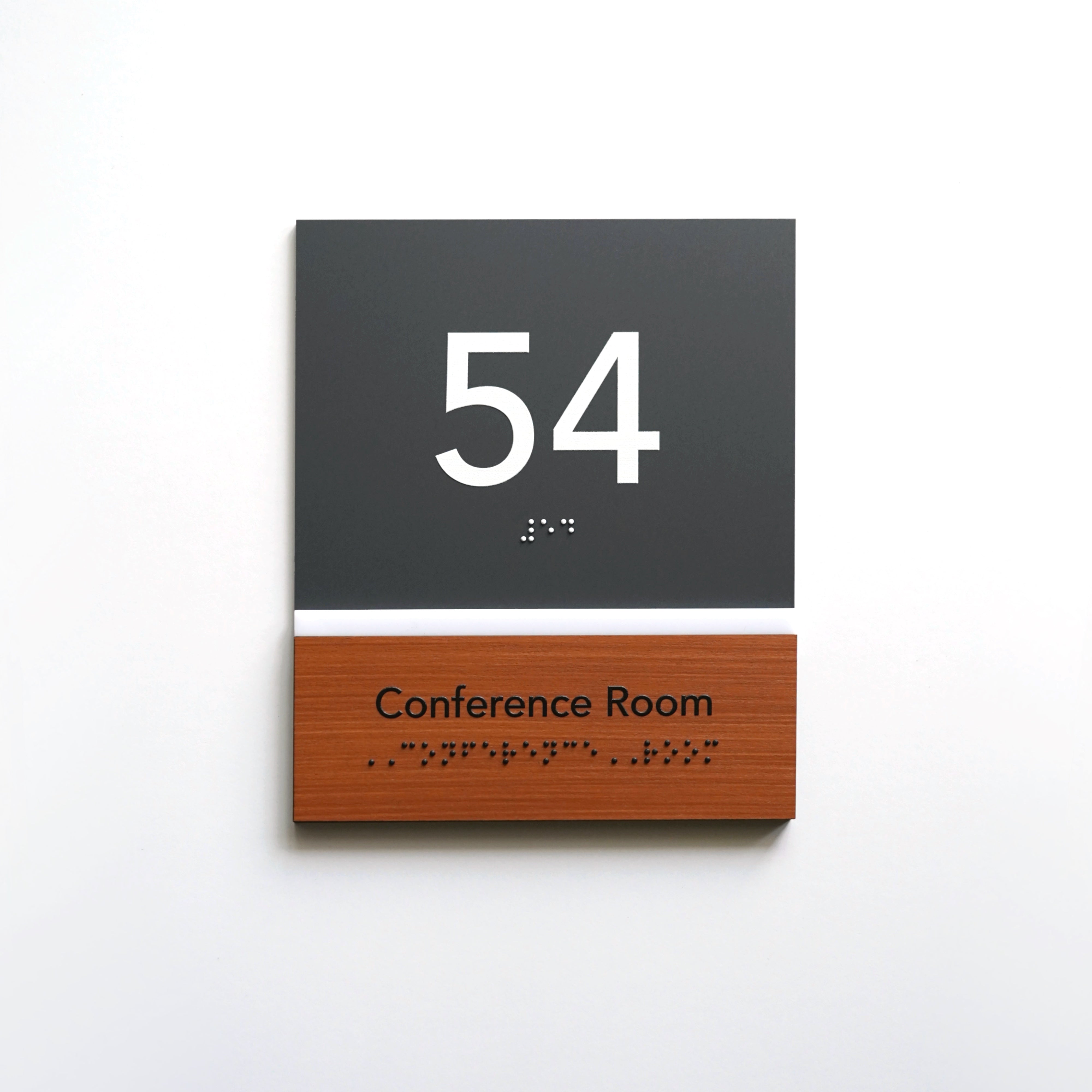Interior directional signs
What are the most important things in building interior planning? The first aspects that will come to your mind are the design and the layout. Of course, these are important features that determine the comfort of the interior of the facility. However, the comfort of navigating is something more than an intuitively understandable planning. Consider using extra tools that will guide visitors and help them navigate to the necessary locations.
Directional signs are the elements that put people at ease in an unfamiliar facility. They provide crucial information visitors need to know about the building to feel safe, comfortable, and confident and avoid frustration at the same time. Let us break down the significance of wayfinding signage into several important aspects.
Interior Wayfinding Signage Explained
To begin with, we need to answer a basic question: What are interior directional signs? Directional or wayfinding signage is a simple system of special markers put all around the building to navigate the visitors and staff to specific locations or routes. Wayfinding signage should be easy to understand and grasp the attention of people since this improves their feeling of space orientation.
Wayfinding signage should be simple. Basically, these are just plates and plaques with arrows pointing in respective directions. Directional signs are placed in hallways and corridors in order to make sure that they are visible to everyone entering the building.
The major functionality of directional signs is to help people inside the building avoid confusion. Everyone should have equal rights to building accessibility in order to be able to satisfy one's basic or specific needs.
Where Indoor Wayfinding Signage is Used
Wayfinding signs are used in almost all public spaces due to simple logic: confusion and frustration might occur wherever a large number of people are in the same place. Difficult navigation might pose a threat to public safety. That is why wayfinding signs are often seen in such places as:
-
Hospitals: Both medical staff and patients should be able to quickly access the hospital area whenever they need it. Difficult wayfinding in hospitals might cause stress, which can severely damage one's health conditions and negatively impact medical staff productivity.
-
Airports: Wayfinding signs in airports are necessary because the speed of one's reaction in an airport might affect one's overall traveling experience. Besides, airports are large facilities where you might not find the right area by simply wandering around the place.
-
Hotels: If an accommodation facility cannot afford staff to guide visitors, it should make sure that the navigation is clear and intuitively understandable. This is exactly what directional signs do. Using clear arrows, they grab the attention of clients and point to the directions of respective floors or rooms.
-
Shopping malls: Public spaces that are divided into multiple departments with different specialisations cannot function effectively without wayfinding signs. How can a new customer know where to look for shoes in a large shopping center without any directional assistance? In order to be able to easy find the necessary location, a visitor needs to have free access to the wayfinding signage system of the facility.
The list of places where wayfinding signs are used is not limited to these 4 options above. If you run a public space, keep in mind that it will not be comfortable for visitors without directional signage.
Types of Indoor Directional Signs
Each directional sign might have its own specific purpose. Here are the most commonly used types of wayfinding signs every public space needs:
-
Evacuation signs: The ease of escape during emergencies often depends on the efficiency of respective wayfinding signs. Evacuation signage helps visitors find the fastest way to safety, which often appears to be life-saving.
-
Emergency signs: Many emergency situations could be prevented if people inside the building had the possibility to respond to them quickly and efficiently. An emergency directional sign is a special indicator that specifies the locations of emergency equipment, like fire extinguishers and hydrants. Staff informed of their placement might be able to localise emergencies before they lead to tragedies.
-
Floor wayfinding signage: Often, people simply need to be informed about access points to respective floors or areas. Floor wayfinding signage also helps to learn which areas are located on respective floors, eliminating the need to wander around the corridors.
Benefits of Indoor Directional Signage
Directional signs make the space more comfortable for a large number of people. There is a common rule that if more than 15 individuals can potentially be present on the floor, then it must be equipped with all the necessary directional signage, like evacuation and emergency signs.
One more benefit of directional signs is that they can heavily boost the productivity of employees. This is especially relevant for new workers who need some time to accommodate in a new office, hotel, restaurant, or shopping mall. Wayfinding signage helps them to forget about initial navigational difficulties. This reduces their stress levels and enables those workers to show better performance.
Access to wayfinding information is one of the key elements that helps people feel comfortable inside the building.
How to Make Perfect Interior Directional Signage
-
Consider design consistency: A wayfinding sign should be a consistent element of the harmonious interior design. Make sure your signage complements the style of the facility because this is important for your branding and image as well.
-
Follow the standards: While a wayfinding sign might serve as a decor element as well, do not neglect its priority functions. Foremost, a wayfinding sign should be visible and understandable. Do not apply too sophisticated fonts and do not play with signs' sizes. If a sign is too small, there will be no way visitors will find the information they are looking for. At the same time, a too-big sign might look awkward and inconsistent.
-
Make signs inclusive: Free access should not be considered a privilege. That is why, these days, you can see more and more signs designed for disabled individuals. An ADA-compliant sign should include tactile letters and writing in Braille. This way, even a person with severe vision impairments will be able to find all the necessary locations.
Benefits of Custom Directional Signage
You might find the design of many standard mass-market signs too simple and hackneyed for the design and style of your interior. You are right but luckily, Bsign specialists found the best solution for such an issue - buy custom-made directional signage.
When buying bespoke signs, you can fully express your identity and individuality. You can ask Bsign specialists to incorporate your signs with some totally unique elements, like brand logos, symbols, mottos, etc. You can also choose the material for your sign and opt for those that will not just look nice but will also be serviceable and long-living.
Why Buy Directional Signs from Bsign
Bsign crafts bespoke signs in different styles and designs. Thanks to the advanced technology of UV printing, our specialists are able to fulfill literally any of your ideas. The attention to detail, top-quality materials, and adherence to all the ADA requirements make our signs not just effective wayfinding solutions but also attractive decor elements.
All you need to buy a custom-made sign from Bsign is to simply contact our manager and specify your requirements. Doubt not that we will find the best possible way to materialise your vision.
FAQ
How long does it take to process a bulk order of interior wayfinding signs?
Usually, we need from 10 to 14 business days to process a bulk order. Single orders take up to 3 business days.
Where can I buy custom-made interior directional signs?
At the Bsign online store, you can buy custom-made interior directional signs of all types. If your facility has some specific areas that should be designated with unique signs, contact us.
Is there any difference between directory and interior wayfinding signage?
Yes, there is a difference. Directory signs typically provide a list of locations and their corresponding directions, often found at building entrances or lobbies. Wayfinding signs, on the other hand, are part of a comprehensive system that includes directories, maps, and directional signs to provide a full navigation solution.
